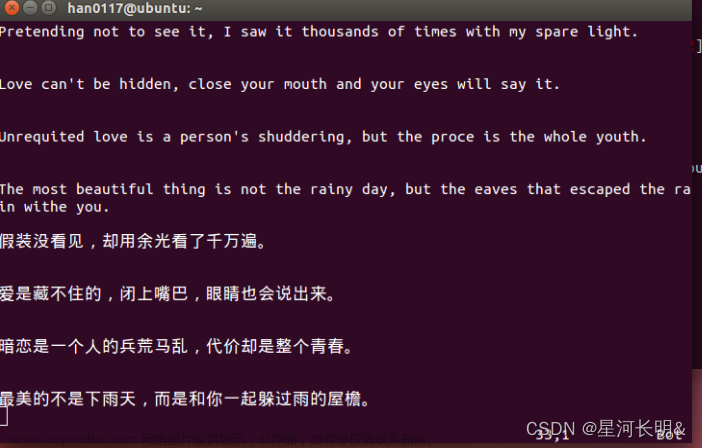利用Python调用外部系统命令的方法可以提高编码效率。调用外部系统命令完成后可以通过获取命令执行返回结果码、命令执行的输出结果进行进一步的处理。本文主要描述Python常见的调用外部系统命令的方法,包括os.system()、os.popen()、subprocess.Popen()等。
本文分析python调用外部系统命令主要从两个方面考虑:
1、是不是可以返回命令执行结果码,因为大部分场景都需要通过判断调用命令是执行成功还是失败。
2、是不是可以获取命令执行结果。某些场景调用外部命令就是为获取输出结果,也可以通过输出结果来判断命令执行成功还是失败。分析结果如下:

下面再针对每一个函数使用方法和实例进行详细描述。
1、subprocess模块
优先介绍subprocess模块的是由于该模块可以替代旧模块的方法,如os.system()、os.popen()等,推荐使用。subporcess模块可以调用外部系统命令来创建新子进程,同时可以连接到子进程的nput/output/error管道上,并得到子进程的返回值。
subprocess模块主要有call()、check_call()、check_output()、Popen()函数,简要描述如下:
Main API
========
call(...): Runs a command, waits for it to complete, then returns the return code.
check_call(...): Same as call() but raises CalledProcessError() if return code is not 0
check_output(...): Same as check_call() but returns the contents of stdout instead of a return code
Popen(...): A class for flexibly executing a command in a new process
Constants
---------
PIPE: Special value that indicates a pipe should be created
STDOUT: Special value that indicates that stderr should go to stdout
下面开始介绍subprocess函数的使用方法。
(1)subprocess.Popen类
subprocess.Popen(args, bufsize=0, executable=None, stdin=None, stdout=None, stderr=None, preexec_fn=None, close_fds=False, shell=False, cwd=None, env=None, universal_newlines=False, startupinfo=None, creationflags=0)
参数说明:
- args:
要调用的外部系统命令。 - bufsize:
默认值为0, 表示不缓存,。为1表示行缓存,。其他正数表示缓存使用的大小,,负数-1表示使用系统默认的缓存大小。 - stdin、stdout、stdout
分别表示标准输入、标准输出和标准错误。其值可以为PIPE、文件描述符和None等。默认值为None,表示从父进程继承。 - shell
Linux:参数值为False时,Linux上通过调用os.execvp执行对应的程序。为Trule时,Linux上直接调用系统shell来执行程序。
Windows:shell参数表示是否使用bat作为执行环境。只有执行windows的dir、copy等命令时才需要设置为True。其他程序没有区别。 - executable
用于指定可执行程序。一般情况下我们通过args参数来设置所要运行的程序。如果将参数shell设为 True,executable将指定程序使用的shell。在windows平台下,默认的shell由COMSPEC环境变量来指定。 - preexec_fn
只在Unix平台下有效,用于指定一个可执行对象(callable object),它将在子进程运行之前被调用 - cwd
设置子进程当前目录 - env
env是字典类型,用于指定子进程的环境变量。默认值为None,表示子进程的环境变量将从父进程中继承。 - Universal_newlines
不同操作系统下,文本的换行符是不一样的。如:windows下用’/r/n’表示换,而Linux下用 ‘/n’。如果将此参数设置为True,Python统一把这些换行符当作’/n’来处理。
Popen对象对应的属性和方法如下:
属性:
stdin, stdout, stderr, pid, returncode
方法:
communicate(self, input=None) -> returns a tuple (stdout, stderr).
wait(self) -> Wait for child process to terminate. Returns returncode attribute.
常用实例
1、打印D:\temp目录下创建test目录。直接调用进程,不考虑获取调用命令输出内容和结果码
import subprocess
p = subprocess.Popen(args='mkdir test', shell=True, cwd='d:/temp')
p.wait()
2、调用ping命令执行,获取命令执行输出内容
import subprocess
p = subprocess.Popen(args='ping -n 2 -w 3 192.168.1.104', stdin=subprocess.PIPE, stdout=subprocess.PIPE, stderr=subprocess.PIPE, shell=True)
p.wait()
print (p.stdout.read())
明:p.stdout、p.stdin、p.stderr为文件对象,可以使用文件对象函数,如read()。
2)subprocess.call()
函数原型:call(*popenargs, **kwargs)。call()调用外部系统命令执行,并返回程序执行结果码。
import subprocess
retcode = subprocess.call('ping -n 2 -w 3 192.168.1.104', shell=True)
print (retcode)
(3)subprocess.check_call()
使用方法同call()。如果调用命令执行成功,返回结果码0,如果执行失败,抛出CalledProcessError.异常。
举例如下:
>>> p = subprocess.check_call('ping -n 2 -w 3 192.168.1.105', shell=True)
正在 Ping 192.168.1.105 具有 32 字节的数据:
请求超时。
请求超时。
192.168.1.105 的 Ping 统计信息:
数据包: 已发送 = 2,已接收 = 0,丢失 = 2 (100% 丢失),
Traceback (most recent call last):
File "<stdin>", line 1, in <module>
File "c:\Python27\lib\subprocess.py", line 186, in check_call
raise CalledProcessError(retcode, cmd)
subprocess.CalledProcessError: Command 'ping -n 2 -w 3 192.168.1.105' returned non-zero exit status 1
(4)subprocess.check_output()
函数原型:check_output(*popenargs, **kwargs)。用法与call()相同。区别是如果执行成功返回的是标准输出内容。如果失败,抛CalledProcessError.异常。
import subprocess
output = subprocess.check_output('ping -n 2 -w 3 192.168.1.104', shell=True)
print(output)
2、os模块
(1)os.system()
os.system(command) 。调用外部系统命令,返回命令结果码,但是无法获取命令执行输出结果,输出结果直接打印到屏幕终端。
import os
retcode = os.system('ping -n 2 -w 3 192.168.1.104')
if retcode == 0:
print ("%s Success" % (ip,))
else:
print ("%s Fail" % (ip,))
(2)os.popen()
os.popen(command) 。调用外部系统命令,返回命令执行输出结果,但不返回结果吗
import os
#学习中遇到问题没人解答?小编创建了一个Python学习交流群:711312441
output = os.popen('ping -n 2 -w 3 192.168.1.104')
print (output)
3、commands模块
commands模块用于调用Linux shell命令。测试了下在windows上执行失败。主要有如下3个函数
getoutput(cmd): Return output (stdout or stderr) of executing cmd in a shell.
getstatus(file):Return output of "ls -ld <file>" in a string.
getstatusoutput(cmd):Return (status, output) of executing cmd in a shell.
使用实例如下:文章来源:https://www.toymoban.com/news/detail-488697.html
import commands
retcode, output = commands.getstatusoutput('ping -n 2 -w 3 192.168.1.104')
print (retcode)
print (output)
总结
在编写程序时可根据使用场景来选择不同的Python调用方法来执行外部系统命令。对于复杂的命令考虑使用subprocess.Popen()完成,如果仅是简单的命令执行,可以使用os.system()完成,如调用windows的暂停程序命令os.system('pause')。文章来源地址https://www.toymoban.com/news/detail-488697.html
到了这里,关于Python调用外部系统命令的文章就介绍完了。如果您还想了解更多内容,请在右上角搜索TOY模板网以前的文章或继续浏览下面的相关文章,希望大家以后多多支持TOY模板网!












